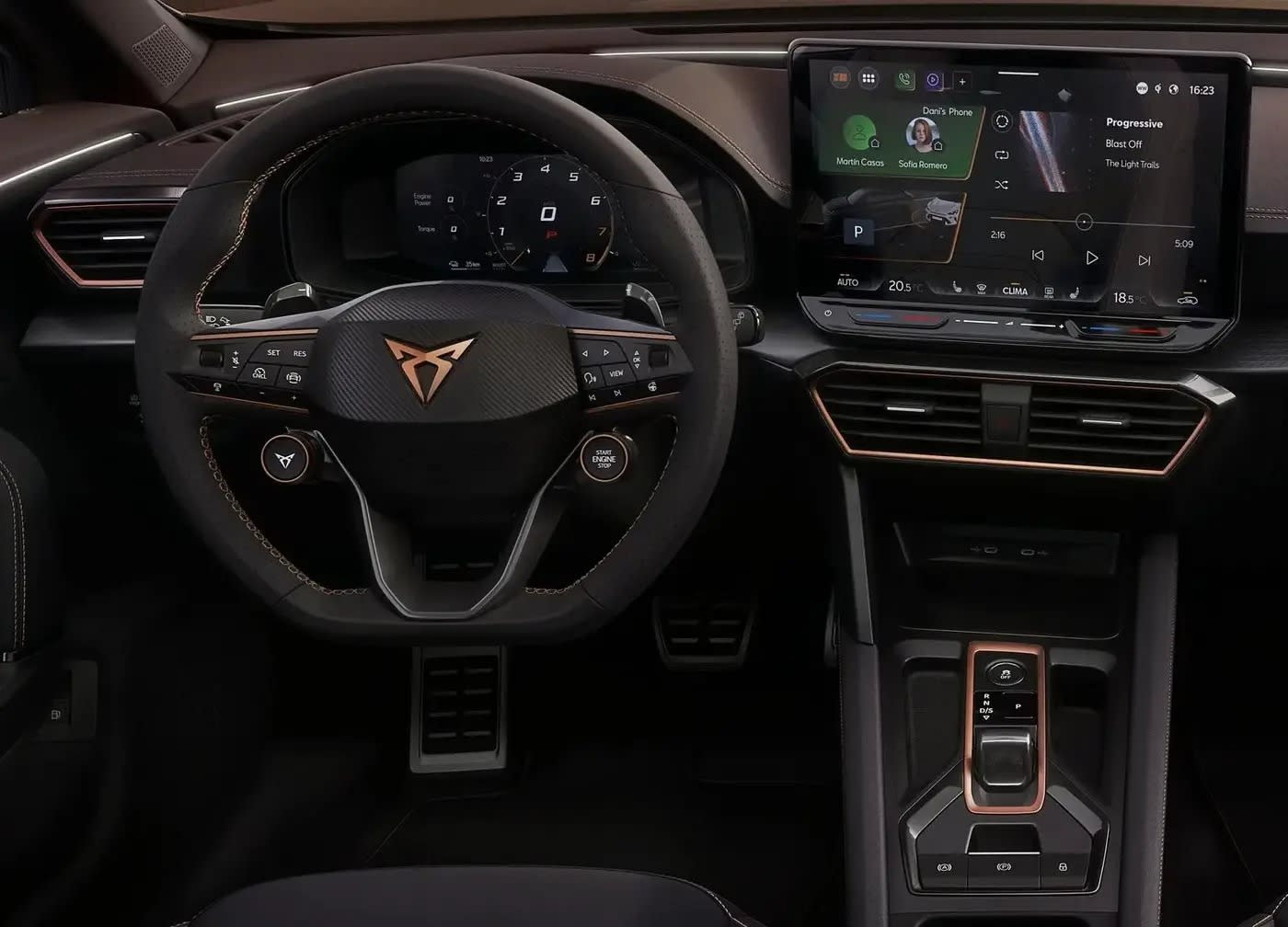Cupra revamps Leon and Formentor with a familiar new look

In Cupra, they try to sprinkle "electric dust" on their old models by designing a front in its electric style. But the interesting move is much more than aesthetics, it's a tactic.
The electric fever that grips the automotive industry extends far beyond the propulsion technology of new cars. This time, it's the pair of Cupra's Leon and Formentor models trying to make an electric twist on the look associated with cars with an electric motor replacing the gasoline burner and battery powering the tank.
In their case, Cupra takes advantage of being the "even sportier" brand of the brand "sportier so far," Seat, and uses the appearance of the "Shark Nose" in the electric Tavascan and loads it on their two relatively old models in the framework of their facelift.
In the new look, both cars give up the grille in front for a completely new front when the upper part is sleek and sharp, and the lower part actually replaces the grille to allow air intake, along with new lighting units. The rest of the bodywork remains largely unchanged.
The main update in the passenger compartment is a 12.9-inch screen replacing the previous 12-inch size. Unfortunately, the control of the audio volume and air conditioning remains through the "slider" unsuccessful touch of the Volkswagen group, which has been replaced in other models. Still part of its update is the possibility for OTA updates to the multimedia system, wireless Android and Apple CarPlay pairing, and like in the Skoda Kodiaq, a 15-watt charging surface.
The 2.0-liter engine in the VZ versions is strengthened from 310 to 333 horsepower, similar to the Audi S3 and the Golf R, but these will only be available for the sportier versions and the station wagon version of the Leon. The Cupra Leon VZ will continue with the engine that produces 300 horsepower. There have been no changes in the 1.5-liter engines with 150 horsepower, except for the option to equip them with a 48V battery for mild hybrid propulsion. The plug-in versions do not shift from the 1.4 to the 1.5-liter engine, with 204 horsepower in the regular versions and 272 in the VZ plug-in (245 horsepower currently). The electric range has been extended to "more than 100 km" according to the manufacturer.
But the more interesting move than the car's facelift, is the attempt to give it a similar appearance to the new Cupra electric Tavascan. This issue touches on what appears to be an effort by Volkswagen's parent company to create a more pronounced distinction between SEAT and Cupra.
After hinting at the cessation of production of SEAT in favor of the spin-off brand and then clarifying that SEAT will continue to be sold in the coming years, the manufacturer needs to create a situation where these two brands are separate from each other, if not in terms of platforms and engines - then at least in terms of external appearance. Because, as mentioned, with the same engines, gearboxes, and similar equipment overall, a different logo and sporty appearance can justify price differences to a certain extent.
The two models will arrive in the country in 2025.
Jerusalem Post Store
`; document.getElementById("linkPremium").innerHTML = cont; var divWithLink = document.getElementById("premium-link"); if (divWithLink !== null && divWithLink !== 'undefined') { divWithLink.style.border = "solid 1px #cb0f3e"; divWithLink.style.textAlign = "center"; divWithLink.style.marginBottom = "15px"; divWithLink.style.marginTop = "15px"; divWithLink.style.width = "100%"; divWithLink.style.backgroundColor = "#122952"; divWithLink.style.color = "#ffffff"; divWithLink.style.lineHeight = "1.5"; } } (function (v, i) { });


